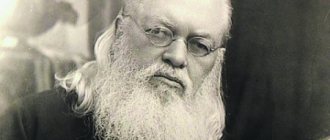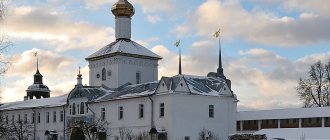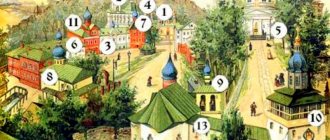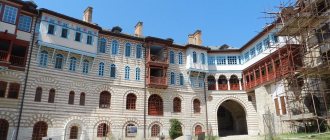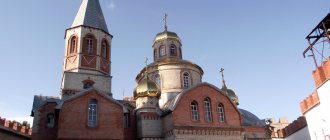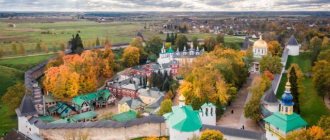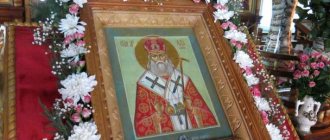Mir
Russia Republic of Crimea Simferopol Holy Trinity Convent (Simferopol) Map is loading…
{"format":"leaflet","minzoom":false,"maxzoom":false,"limit":50,"offset":0,"link":"all","sort":[""], "order":[],"headers":"show","mainlabel":"","intro":"","outro":"","searchlabel":"\u2026 \u0441\u043b\u0435\ u0434\u0443\u044e\u0449\u0438\u0435 \u0440\u0435\u0437\u0443\u043b\u044c\u0442\u0430\u0442\u044b","default":"","import-annotation":false,"width ":"auto","height":"350px","centre":{"text":"","title":"""link":"""lat":44.9490279999999984283931553363800048828125,"lon": 34.104027999999999565261532552540302276611328125,"icon":""},"title":"","label":"","icon":"","lines":[],"polygons":[],"circles":[ ],"rectangles":[],"copycoords":false,"static":false,"zoom":8,"defzoom":14,"layers":["OpenStreetMap"],"image layers":[] ,"overlays":[],"resizable":false,"fullscreen":true,"scrollwheelzoom":true,"cluster":false,"clustermaxzoom":9,"clusterzoomonclick":true,"clustermaxradius":80, "clusterspiderfy":true,"geojson":"","clicktarget":"","showtitle":true,"hidenamespace":false,"template":"","userparam":"","activeicon": "","pagelabel":false,"ajaxcoordproperty":"","ajaxquery":"","locations":[{"text":"\u003Cb\u003E\u003Ca href=\"/palomnik/%D0% A1%D0%B2%D1%8F%D1%82%D0%BE-%D0%A2%D1%80%D0%BE%D0%B8%D1%86%D0%BA%D0%B8%D0%B9_ %D0%B6%D0%B5%D0%BD%D1%81%D0%BA%D0%B8%D0%B9_%D0%BC%D0%BE%D0%BD%D0%B0%D1%81%D1 %82%D1%8B%D1%80%D1%8C_(%D0%A1%D0%B8%D0%BC%D1%84%D0%B5%D1%80%D0%BE%D0%BF%D0% BE%D0%BB%D1%8C)\» title=\»\u0421\u0432\u044f\u0442\u043e-\u0422\u0440\u043e\u0438\u0446\u043a\u0438\u0439 \u0436\u0435\u043d\ u0441\u043a\u0438\u0439 \u043c\u043e\u043d\u0430\u0441\u0442\u044b\u0440\u044c (\u0421\u0438\u043c\u0444\u0435\u0440\u043e\u0 43f\u043e\u043b\u044c)\ "" \u0439 \u043c\u043e\u043d \u0430\u0441\u0442\u044b\u0440\u044c (\u0421\u0438\u043c\u0444\u0435\u0440\u043e\u043f\u043e\u043b\u044c)\u003C/a\u003E\u003 C/b\u003E\u003Chr /\u003E\u003Ca href=\»/palomnik/%D0%A1%D0%B2%D0%BE%D0%B9%D1%81%D1%82%D0%B2%D0%BE:%D0%90% D0%BD%D0%BD%D0%BE%D1%82%D0%B0%D1%86%D0%B8%D1%8F\" title=\"\u0421\u0432\u043e\u0439\u0441\u0442\ u0432\u043e:\u0410\u043d\u043d\u043e\u0442\u0430\u0446\u0438\u044f\»\u003E\u0410\u043d\u043d\u043e\u0442\u0430\u0446\u0438\u 044f\u003C/a\u003E : \u043e\u0434\u043d\u0430 \u0438\u0437 \u0433\u043b\u0430\u0432\u043d\u044b\u0445 \u0434\u043e\u0441\u0442\u043e\u043f\u04 40\u0438\u043c\u0435\u0447\ u0430\u0442\u0435\u043b\u044c\u043d\u043e\u0441\u0442\u0435\u0439 \u0438\u0441\u0442\u043e\u0440\u0438\u0447\u0435\u0441\u04 3a\u043e\u0433\u043e\u0446\ u0435\u043d\u0442\u0440\u0430\u0433\u043e\u0440\u043e\u0434\u0430. \u0412 \u0441\u043e\u0431\u043e\u0440\u0435 \u043c\u043e\u043d\u0430\u0441\u0442\u044b\u0440\u044f \u043f\u043e\u0447\u0438 \u0432\u0430\u044e\u0442\u043c \u043e\u0449\u0438 \u0432\u044b\u0434\u0430\u044e\u0449\u0435\u0433\u043e\u0441\u044f \u043f\u0440\u043e\u0444\u0435\u0441\ u0441\u043e\u0440\u0430,\ u0430\u0440\u0445\u0438\u0435\u043f\u0438\u0441\u043a\u043e\u043f\u0430 \u041a\u0440\u044b\u043c\u0441\u043a\u043e\u0433\u04 3e\u041b\u0443\u043a\u0438 ( """title":"\u0421\u0432\u044f\u0442\ u043e -\u0422\u0440\u043e\u0438\u0446\u043a\u0438\u0439 \u0436\u0435\u043d\u0441\u043a\u0438\u0439 \u043c\u043e\u043d\u0430\u0441\ u0442\u044b\u0440\u044c ( \u0421\u0438\u043c\u0444\u0435\u0440\u043e\u043f\u043e\u043b\u044c)","link":"","lat":44.9490279999999984283931553363800048828125," lon":34.104027999999999565261532552540302276611328125,"icon":"" }],"imageLayers":[]}
44.949067; 34.103983
Russia, Republic of Crimea, Simferopol, Odesskaya street, 12
Simferopol, Republic of Crimea295000
Russia
Telephone:
+7 3652 270103 (the phone works intermittently, in such cases write by email).
Email:
Holy Trinity Convent in Simferopol
- one of the main attractions of the historical center of the city. The relics of the outstanding professor, Archbishop Luka of Crimea (Voino-Yasenetsky) rest in the cathedral of the monastery.
History[edit]
In 1796, on the site of the current Holy Trinity Convent, a wooden parish church of the Holy Trinity was built for the Greeks living in Simferopol. In 1868, the wooden church was replaced by a stone one.
After the destruction of the Alexander Nevsky Cathedral in Simferopol in 1930, the status of a cathedral church passed to the Holy Trinity Church. In 1933, the authorities decided to close the temple and transfer the building to a boarding school. Work on remodeling the temple had already begun, but the parishioners, most of them Greek citizens, achieved in 1934, through the Greek mission in Moscow, the return of the temple to the church community. Odesskaya Street in Simferopol, on which the Holy Trinity Monastery rises, began to be called that way in 1946. Until this time, from about 1839, it was known as Greek, and the name fully justified it. The Greeks have lived here for a long time. Greek shopping arcades have been partially preserved to this day from the 18th century—several columns under a tiled roof.
In 2003, a convent was established at the Holy Trinity Church.
The building of the modern cathedral was built according to the design of the architect I.F. Kolodin: cruciform in plan with an octagonal light drum rising in the middle and a low bell tower above the entrance. Light enters the temple through arched windows. On the outside, the walls are decorated with decorative patterns, thin pilasters with capitals of the Corinthian order, light arcature, and mosaic images. The blue domes of the bell tower and the temple, like the sky, are crowned with openwork crosses—this makes it especially bright and elegant.
The interior decoration of the temple is also magnificent: on the sails there are images of the four evangelists, in the dome there is an image of the Lord. The cathedral has two chapels: one is dedicated to the Cathedral of the Crimean Saints, and the second to Saints Equal-to-the-Apostles Constantine and Helen. The temple was consecrated in honor of one of the most important twelve Christian holidays—the day of the Holy Trinity.
In the 1930s, Porfiry (Gulevich, †1937), Bishop of Simferopol and Crimea, and Archpriest Nikolai Mezentsev (†1938) served in the Holy Trinity Church; an active member of the church community was Dimitri Spiridonov (†1938), later canonized Holy New Martyrs of Crimea. In 1946–1961, Luka (Voino-Yasenetsky) was the Archbishop of Crimea. The walls of the Holy Trinity Church remember the prayers and sermons of this saint of God, whose holy relics were found in 1996 and transferred here from one of the Simferopol cemeteries.
In 2001, the relics of St. Luke were placed in a silver shrine, sent as a gift from Greece. In Greece, the saint is just as revered as on Crimean soil: in almost every temple, in every hospital, a particle of his relics is preserved. Professor of medicine and spiritual pastor, Saint Luke left a rich scientific and spiritual heritage: 55 works on surgery and anatomy, 10 volumes of sermons, the theological work “Spirit, Soul and Body”. Every year on June 11, the Simferopol and Crimean diocese solemnly celebrates the day of memory of Confessor Luke. On this day, medical students and doctors consecrate their white coats on the shrine with the relics of the saint and surgeon.
Historical reference
Once upon a time, Odesskaya Street, where the monastery is now located, was called Grecheskaya, because it was the area where representatives of this national community lived. It was they who once brought Christianity to the land of Crimea, and later experienced persecution more than once from the Turkish authorities, under whose protectorate the peninsula was until 1783. And already in the 20th century. The Greeks were destined to protect this Trinity Church from closure, which later gave rise to the monastery.
Parish Church
This was precisely the original status of the temple, now the main one for the Trinity Monastery. Upon the annexation of Crimea to the Russian Empire, local Greeks turned to the newly appointed bishop, asking for permission to build a church for the Greeks, with services in the national language. It was assumed that it would be erected “with our own money,” that is, with the money of parishioners. So on May 7, 1796, the Church of the Holy Trinity was founded.
The original history of the temple is directly related to the Simferopol Greeks.
- The greatest contribution to the construction was made by the Greek merchant, Constantine Yani Barako. From his youth, he was in Russian military service for more than 20 years, participated in the Russian-Turkish War of 1768-74, even the famous Battle of Chesma. After receiving his resignation, he opened his own business and did a lot of church charity work. Subsequently, Barako bequeathed a considerable amount of expensive real estate to the temple. The income it brought in was such that it allowed the parish and the entire clergy to exist for the next 100 years, and even maintain a school.
- History has preserved the names of the Greek priests, Nicholas Paximade, as well as his son John, who later replaced his father as rector of the temple. Father John distinguished himself during the Crimean War (1853-56), when he was a military priest. It was under the leadership of Fr. John, construction of a stone building began.
Architecture
27
September
1868
The newly built stone church in honor of the Holy Trinity was consecrated.
The author of the project is Ivan Fedorovich Kolodin, a student of the famous architect A.N. Voronikhin, creator of the Kazan Cathedral in St. Petersburg. It is assumed that the last years of his life I.F. Kolodin lived on the Crimean land, and this is where the temple project appeared.
Its architectural features are reminiscent of Greece: according to the Byzantine tradition, the building was built in the form of the so-called “Greek cross”, the facade is decorated with stucco molding of the so-called “Corinthian order”, implying brightness and elegance.
Useful materials
Persecution
With the beginning of the mass closure of churches by the atheistic authorities, Trinity was robbed several times under the guise of “seizure of church valuables” for the hungry, but they managed to save the parish and continue services. When the main temple of Simferopol was closed in 1930, Trinity was a cathedral for some time. But already in 1933, a decision was made to transfer the building to a boarding school and to stop services. The Greek parishioners of the church, however, did not give up; through Greek diplomats they managed to defend the temple from closure. But his ministers and parishioners did not escape arrest.
Current state[edit]
Through the efforts of the abbess of the monastery, Abbess Eusevia (Palchik) and the sisters, a museum of St. Luke was opened in one of the monastery buildings. The monastic shrines and the unique museum are visited daily by numerous Orthodox pilgrims who come to venerate the saint and confessor of Crimea Luke from all over the world.
The monastery has a bakery, sewing and handicraft workshops. A Sunday children's school is open. The bishop's choir of the monastery is well known and loved in Crimea and beyond.
Traveling through the Orthodox shrines of Crimea
In April, by the grace of God, I was able to make a pilgrimage to the Orthodox shrines of southeastern Crimea. I was invited by the Malinovsky family of Orthodox tour guides, whom I talked about in the previous article. In a few days, of course, I did not have time to see all the shrines of Crimea: there are a huge number of them. But I still saw a lot, and I would like to share my impressions with you, dear readers of the Pravoslavie.ru Portal.
Ai-Petri. Photo: Eduard Gordeev / National Geographic
I flew to the new spacious Crimean Wave airport that had just opened in Simferopol. It is very pleasant to be there. This is perhaps the most modern and green airport in Russia, built taking into account the best world experience.
In the registration hall there is the largest “green wall” in Europe, surrounded by islands of Crimean flora. In the information sheet, I read about the presence of more than 10,000 green plants in the airport building. On the fourth floor there is an open terrace overlooking the Chatyr-Dag mountains; this is a unique architectural solution that has no analogues in Russia. I went up to the terrace - the view is really beautiful, and it’s easy to breathe at the airport.
Over three days, Sergei, Victoria, and I visited many Orthodox churches and monasteries.
1. Simferopol, Holy Trinity Convent
First of all, of course, we decided to see the Orthodox shrines of Simferopol itself. The Holy Trinity Convent with the beautiful Holy Trinity Cathedral is located almost in the very center of the Crimean capital, on Odesskaya Street, 12. The ancient cathedral was first consecrated in 1796 and rebuilt in 1868. Since 2003, there has been a convent here.
Holy Trinity Cathedral
Near the cathedral
The relics of the holy confessor, Archbishop Luke of Crimea (Voino-Yasenetsky), who served here from 1946 to 1961, rest in the cathedral. He was a Crimean by birth and gave the last 15 years of his life to Crimea. In 2001, Greek clergy presented the monastery with a silver shrine for the relics of the saint.
Reliquary with the relics of the holy confessor Luke of Crimea
The bishop spoke briefly about his exile: “Wherever they send me, God is everywhere.”
Vladyka Luke, a brilliant surgeon and holy man, endured many sorrows, persecutions and trials. His wife died, leaving his young children orphans. He himself was persecuted and tortured, sent to the most distant exile, 230 miles beyond the Arctic Circle, where even crows and sparrows did not live, because in the frosts and fierce winds of this region they froze in flight and fell like stones to the ground. The bishop spoke briefly about his exile: “Wherever they send me, God is everywhere.”
Icon of the Holy Confessor Archbishop Luke of Crimea
In all the trials that befell him, the saint did not lose courage and faith. He helped everyone who met on his life’s path and advised his spiritual children: “The main thing in life is to always do good to people. If you can’t do great good for people, try to do at least a little.”
Vladyka worked at the limit of his strength, performed 4–5 operations a day, and did not leave work until dark. He took the hopeless to the operating table and snatched them from the hands of death. He healed a huge number of people - often those who were abandoned by other doctors. He corrected the inversion of the eyelids of an old Tungus man, half-blind from trachoma, by transplanting the mucous membrane, and the result of the operation was so good that the old man still shot squirrels, hitting them directly in the eye. The boy, who had been operated on for extremely advanced osteomyelitis of the hip, came to the Bishop completely healthy.
Surgeon V.N. Zinovieva, Vladyka’s student, recalled that he remembered every patient’s face, knew his last name, and kept in his memory all the details of the operation and the postoperative period. He said: “For a surgeon there should be no “case”, but only a living suffering person.”
In 1946, Vladyka was transferred to Crimea by the Archbishop of Simferopol and Crimea. He wrote about this: “This was undoubtedly by the will of God, for here I am very needed. I have to organize a ruined diocese.” During the war, the cities and villages of Crimea were terribly destroyed, beautiful churches were severely damaged. The Bishop had to take care of 58 Crimean parishes. He put a lot of work into restoring churches and resuming worship in them.
And today there are numerous cases of miraculous help from the Bishop
At the beginning of 1955, the bishop was completely blind, but no one heard any complaints or grumbling from him. He wrote: “I accepted it as God’s will that I should be blind to death, and I accepted it calmly, even with gratitude to God.” As a doctor, he remained a subtle diagnostician and accurately determined the outcome of the disease. Local clinics referred the most seriously ill patients to a blind professor, Archbishop Luke, so that he could make a correct diagnosis.
And today there are numerous cases of miraculous help from the Bishop. Every Friday a prayer service is held in the cathedral, after which you can venerate the relics of the saint. A large number of believers gather at the prayer service.
At the relics of St. Luke
There is a museum of St. Luke of Crimea on the territory of the monastery, and I was able to see the bishop’s personal belongings, paintings that he himself painted. She knew that he was tall, but she was amazed at the large size of his robe and boots. The guide confirmed that Saint Luke was very tall, powerfully built, majestic. Such grace rested on this chosen one of God that when he entered any room, even unbelievers stood up.
Museum of St. Luke
The cathedral also houses a particularly revered icon of the Mother of God “The Sorrowful,” which was miraculously renewed in 1998.
2. Simferopol, Cathedral in the name of the Holy Apostles Peter and Paul
Very close to the Holy Trinity Monastery, on Oktyabrskaya Street, 16, there is a cathedral in the name of the Holy Apostles Peter and Paul. According to legend, it was built on the site where Suvorov’s headquarters tent stood during the Crimean campaign of 1770.
St. Peter and Paul Cathedral
Among the cathedral's shrines are the ancient Iveron Icon of the Mother of God, a particle of the holy relics of St. Hypatius of Pechersk, and the revered icon of St. Nicholas the Wonderworker, whose face was miraculously reflected on the glass of the icon case in 2004.
A wonderful icon of St. Nicholas the Wonderworker, whose image appeared on the glass of the icon case
3. Simferopol, Church of the Holy Equal-to-the-Apostles Kings Constantine and Helena
Next to the Peter and Paul Cathedral, on Oktyabrskaya Street, 8a, there is the Church of the Holy Kings Equal to the Apostles Constantine and Helena - a former Russian regimental church, the oldest temple in Simferopol. On the ceiling of the temple there are images of regimental coats of arms.
Church of the Holy Kings Constantine and Helena
In 1787, Catherine II prayed here, ordering church utensils and a sacristy to be delivered here from St. Petersburg.
Memorial plaque in honor of Catherine II
4. Simferopol, St. Alexander Nevsky Cathedral
The St. Alexander Nevsky Cathedral was built on the site of the Suvorov Redoubt, consecrated in 1829, destroyed in 1930 and restored quite recently, under the patronage of Russian President V.V. Putin.
St. Alexander Nevsky Cathedral
Here rest the relics of Archbishop of Tauride and Simferopol Gury (Karpov) (1814–1882), an educator of the Chinese, glorified in 2008 as a locally revered saint.
Archbishop of Tauride and Simferopol Gury - educator of the Chinese
Bishop Gury lived in China as a missionary for 18 years and translated several liturgical books into Chinese. The bishop’s Equal-to-the-Apostles labors brought hundreds of Chinese to Orthodoxy.
Saint Gury translates liturgical books for the Chinese
In 1900, his spiritual children (222 people), led by a Chinese priest, Hieromartyr Mitrofan, suffered martyrdom.
Cathedral of the Holy Chinese Martyrs
Bishop Gury acquired the spiritual gifts of fervent prayer and insight
Vladyka Gury acquired the spiritual gifts of fervent prayer, fiery preaching and clairvoyance. There are known cases of healings through his prayers, as well as cases of his miraculous appearances to various persons. So, during the Great Patriotic War, he appeared in a dream to one pious nun and said that he would save his city from destruction. And indeed, despite the battles, Simferopol remained virtually untouched.
Almost 50 years after the burial, the saint’s body remained incorrupt, and blood flowed from his hand, which was accidentally damaged when moving the coffin.
Reliquary with the relics of St. Gurias
5. Simferopol, Chapel of the Holy Royal Passion-Bearers
The chapel was built on the initiative of Russian State Duma deputy Natalia Poklonskaya in 2016.
Chapel of the Holy Royal Passion-Bearers
Next to the chapel is a bust of the Holy Sovereign Emperor Nicholas II, embodied in bronze by Andrei Klykov, the son of the famous Russian sculptor. Quite recently, many icons and even a bust of St. Emperor Nicholas II streamed myrrh in the chapel, and the fragrance could be felt even on the opposite side of the street.
Bust of the holy passion-bearer Emperor Nicholas II
6. Bakhchisarai, men's cave Holy Assumption Monastery
From Simferopol we went to Bakhchisarai. You can get here from Simferopol by commuter trains (about an hour), buses (about 30 minutes) or by car (15–20 minutes). The name “Bakhchisaray” is translated from Crimean Tatar as “garden-palace” and was given to the city when it was the capital of the influential Crimean Khanate (XV-XVIII centuries).
Despite the fact that today the population of Bakhchisarai is only about 27,000 people, the city still retains its unique flavor, reminiscent of the ancient era of the Crimean Khanate.
Holy Dormition Monastery
Near Bakhchisarai, in one of the most beautiful corners of Crimea, there is the ancient Holy Dormition Monastery. Many legends are associated with its centuries-old history. These places were consecrated by the miraculous appearance of the icon of the Mother of God.
Holy Dormition Monastery
The monastery is surrounded on both sides by steep cliffs up to 140 meters high. Emperors Alexander I and II and Nicholas I came here during the Crimean War of 1853–1856. A hospital was equipped on the territory of the monastery, where the famous surgeon N.I. operated. Pirogov.
Holy Dormition Monastery
7. Inkerman, St. Clement Cave Monastery
After the Holy Dormition Monastery, we went to the Holy Clement Cave Monastery - one of the oldest monasteries in Crimea. It is located in Inkerman, a suburb of Sevastopol. The distance from Bakhchisarai to Inkerman is about 30 kilometers, travel time is 45 minutes. There are frequent buses from Bakhchisarai to Sevastopol with stops in Inkerman.
Inkerman. Monastery of St. Clement
Here in the 1st century the holy martyr Clement, an apostle from the age of seventy, worked
Here, in the 1st century AD, the holy martyr Clement, Bishop of Rome, an apostle from the age of seventy, exiled to the Inkerman quarries by Emperor Trajan for preaching Christianity, worked. In the year 101, by order of the emperor, the saint was drowned in the sea, with an anchor tied to his neck. Through his prayers, many miracles were performed, one of which was the discovery of a holy spring to alleviate the plight of convicts.
Nicholas II with the August Family in the Inkerman Monastery
Three cave churches were built in the monastery, one of them was cut into the rock by the hands of St. Clement himself. There is also an ossuary here.
Ossuary
Among the shrines is a particle of the relics of the venerable head of the holy martyr Clement (the myrrh-streaming head itself is kept in the Kiev Pechersk Lavra).
Monastery of St. Clement
The beautiful nature of these places, ancient caves and the very spirit of the monastery fill the soul with an inexpressible feeling of peace and tranquility. The candle shops sell a wide variety of healthy teas and herbal balms made by the brethren of the monastery.
Monastery of St. Clement
Cave temple
8. Chersonesos, St. Vladimir's Cathedral
Then we went to Chersonesos. It was on the site of this ancient settlement that Sevastopol grew over time, the Apostle Andrew the First-Called visited these places, and here the holy Equal-to-the-Apostles Prince Vladimir was baptized.
Sevastopol
In the 19th century, the Chersonesos Monastery was located here. During the first defense of Sevastopol, the monastery was occupied by the French, who fired at Russian troops from here. After the war, the monastery was restored, and its decoration was the St. Vladimir Cathedral, the construction of which began in 1861 in the presence of Emperor Alexander II, who laid the first stone of the future temple.
St. Vladimir's Cathedral
The construction of the cathedral lasted more than 30 years; money for its construction was collected by subscription from all over Russia. The thickness of the walls reached one meter, and the interior decoration amazed with its luxury and beauty: marble walls and columns, mosaic floors, granite stairs to the second floor, paintings by famous artists. After the revolution, the cathedral was turned into a museum; during the war it was badly damaged and only in our time has it been revived to its former grandeur.
St. Vladimir's Cathedral
Now St. Vladimir's Cathedral is the second largest in Crimea and the largest temple in Sevastopol, its height is 26 meters. It is located on the territory of the interesting National Historical and Archaeological Reserve “Chersonese-Tavrichesky”. His address: st. Ancient, 1.
Inside the cathedral
9. Cape Fiolent, Monastery of St. George the Victorious
Here, according to legend, Greek sailors were saved from death by Saint George
Next we went to Cape Fiolent. The distance from the center of Sevastopol to the cape is 16 kilometers; buses, trolleybuses and minibuses go here. At Cape Fiolent, which in Greek means “God’s Country,” is the monastery of St. George the Victorious.
Here, according to legend, in 891, the Taurian Greek sailors were saved from certain death by Saint George, who appeared to them on a rock and showed them a safe path. When they climbed the rock after the storm, they found his icon there. A year later, the sailors returned to these places to found a monastery here. Now there is a Worship Cross on the rock.
Worship cross on the rock
The Royal Family came here, and the Tsar even allocated funds for the construction of a new temple, but the revolution prevented the implementation of the plan. These blessed places were visited by Pushkin, Alexei Tolstoy, Bunin, Chekhov, Ostrovsky and many other writers and poets.
Cape Fiolent Monastery of St. George
This is an amazingly beautiful place. The monastery offers a unique view: harsh cliffs of various shades - from light shell rock to dark volcanic rock. The jasper beach, the coating of which is replete with splashes of multi-colored minerals, the azure sea stretching into infinity, the fragrance of southern flowers, jasmine and juniper bushes - all this is indescribably beautiful and comforting for the soul that loves the beauty of God's world.
Cape Fiolent
10. Feodosia, Kazan Cathedral
From Sevastopol we went to Feodosia, since this is the hometown of my friends - the Malinovsky guides, who showed me the shrines of southeastern Crimea.
You can get from one city to another by car, train (address of Sevastopol railway station: Vokzalnaya str., 1) or bus (there are direct and passing, they run frequently, travel time is from 3 to 6 hours, depending depending on which road the bus travels on: through Simferopol - 194 km, or through Yalta - 249 km, the price of a ticket for the Sevastopol-Feodosia bus in 2018 is about 400 rubles).
Some travelers base their entire vacation around the Sevastopol - Feodosia route and are very satisfied.
In Feodosia, the first thing we did was visit the Kazan Cathedral (Sobornaya Street, 52), which was created as a courtyard of the Toplovsky Convent, with donations from the townspeople. For many years, Count Nikolai Fedorovich Heyden was his zealous benefactor - he donated his dacha to the monastery, on the site of which first a wooden temple arose, and in 1907 a stone cathedral. The construction of the temple was led by Abbess Paraskeva (now glorified as a locally revered saint). After the revolution, the cathedral was turned into a warehouse, and during the war - into a hospital. After the war, its revival began. The cathedral was visited by Saint Luke, who participated in organizing its renovation with artistic paintings of Gospel scenes and church decoration.
Kazan Cathedral
Now it is a majestic and beautiful cathedral with a small garden, a real pearl of Feodosia. Here there is the revered Kazan Icon of the Blessed Virgin Mary, the “Sign” icon, which is the patroness of Feodosia, and the ark with the relics of many saints.
In the Kazan Cathedral
12. Feodosia, Iveron Temple
It is believed that Afanasy Nikitin prayed in this temple
An ancient, former Armenian temple, built presumably in the 14th century, according to legend, on the very spot where the holy Apostle Andrew the First-Called preached. It is believed that the traveler Afanasy Nikitin prayed in this temple (his monument is located nearby). There is also an assumption that the frescoes of the temple (preserved in fragments) belong to the outstanding master of fresco painting Theophanes the Greek (1340–1405).
The address of the temple is Portovaya Street, 16.
Iversky Temple
13. Feodosia, Catherine's Church
Address – Fedko street, 95, next to the bus station and railway station. An elegant church in the Russian style, pleasing with its architectural appearance, beautifully painted inside, was built in 1892 at the expense of the actual state councilor, an outstanding scientist of his time, Doctor of Mathematical Sciences, professor of physics Vasily Ivanovich Lapshin.
St. Catherine's Church
For 20 years, Hieromartyr Andrei Feodosia (Kosovsky) (1878–1920) served as its rector. He was arrested right in the church on December 7, 1920, on the day of remembrance of the Great Martyr Catherine. In honor of the holy martyr, another church with a baptismal center and a Sunday school was built in the church yard in 1999.
St. Catherine's Church
14. Old Crimea, source of the Holy Great Martyr and Healer Panteleimon
The distance between Feodosia and Old Crimea is approximately 26 kilometers, you can travel it by car in half an hour, a bus from the bus station with stops takes about an hour, the ticket costs 50 rubles.
The surroundings of Old Crimea are rich in springs that are used for medicinal purposes, but the most famous of them is the spring of the Holy Great Martyr Panteleimon. Svoboda Street leads to the quiet outskirts of the city, a dirt road descends to the Churuk-Su River, beyond which, on a low mountain slope, there is a chapel and a spring. Any local resident can easily show you the way.
Old Crimea. Source of the Holy Great Martyr and Healer Panteleimon
People have known about this source since ancient times
People have known about this source since ancient times. Emperor Alexander II came to him with his family, and Prince Potemkin also visited him.
In Soviet times, Ksenia Tokareva, a resident of Old Crimea, twice heard a voice in her dreams that told her to be the keeper of the holy spring. She looked after the spring from 1958 until her death in 1985. People called Ksenia Mother.
The water in the source is incredibly tasty.
15. Grushevka, Sudak district, Temple of the Icon “The Sign”
Not far from Old Crimea, on the road to the Toplovsky Monastery, there is the small village of Grushevka (the historical name of Sala). The distance between Old Crimea and Grushevka is 16 kilometers, travel time is 10 minutes, there are buses.
We, of course, could not drive past the village with such a cozy name without looking into its unusual ancient temple made of rubble stone - a living testimony to the centuries-old history of Crimea.
Temple in honor of the icon of the Sign
Presumably the temple was built by Armenian settlers in the 14th century, and its altar part, preserved like a pearl in a shell, dates back to an even earlier period - to the first centuries of Christianity. Archaeologists who conducted excavations at the site of the temple date the altar part no later than the 4th century AD.
The ancient temple was destroyed by the Huns in the 4th century and restored in the 8th century, and its builders prudently dug long underground passages in case of war towards Sudak and Old Crimea, as well as to Mount Agarmysh.
Temple in Grushevka
Each hussar, having signed his name on his cap, threw it, and the girls caught it
In 1475, Crimea was captured by the Turks, who once again destroyed the temple. In 1779, Christians of Crimea, including Armenians, were resettled to the Don, and the ancient village was deserted. After the bloodless annexation of Crimea to the Russian Empire in 1783, a hussar regiment was stationed in the village, whose commander presented the icon of the Mother of God “The Sign” to the temple. In 1792, the temple was rebuilt and consecrated in honor of the Znamenskaya Icon.
43 hussars expressed a desire to stay in Grushevka after the end of their service, and the commander decided to provide them with brides from Russian provinces. Girls who wanted to come to the Crimean village were given freedom, and very soon the brides arrived. They took part in a “hat showdown”, since each of the hussars, having signed their name on a hat, threw it into the air, and the girls caught these hats. It is interesting that none of the families created in this way broke up, and now their descendants live in Grushevka, who remember which of the hussars they descend from.
16. Toplovsky Trinity-Paraskevievsky Monastery
Not far from Grushevka, in the village of Topolevka, Belogorsk district, we visited an amazing monastery, founded near the Greek village of Toplu (from Greek “place, area”). How to get to the monastery is described in detail on its website: https://www.toplovskyi.ru/palomnikam/kak-dobratsya-do-monastyrya/
Beautiful churches, three healing springs (St. Paraskeva, Great Martyr George the Victorious and Three Saints), a bathhouse, a delicious free meal, an inexpensive pilgrimage hotel, a rich selection of spiritual literature in the bookstore, many healing teas and medicinal herbs, clean air, the scent of lavender and roses , tulips, silence and grace of the ancient monastery - all this creates a strong desire to return here again and again.
In the Toplovsky Monastery
According to legend, Saint Paraskeva suffered martyrdom here in the 2nd century, and at the site of the beheading of her head a spring gushed out. He still heals those who suffer, especially often from eye diseases.
We happily swam in the closed plunge pool, where women and men take turns entering. For swimming here, both are blessed to wear long shirts.
In the bathhouse of the Toplovsky Monastery
There is a legend that Saint Paraskeva walks around the monastery at night and prays.
For many centuries, when there were no roads nearby, and the spring flowed through a dense forest, people did not forget about it, it was so healing. Pilgrims of those times made their way with difficulty through forest thickets and ravines, prayed at the spring in the hope of receiving healing and received it - and this was the best evidence that the Venerable Martyr Paraskeva did not leave these places with her mercy. This was confirmed by the discovery of her icon in the spring. The Greeks took the found icon with them when moving to the Azov region in 1778, and, according to legend, the image saved Mariupol from cholera.
There is still a legend that Saint Paraskeva at night, especially on great holidays, walks around the monastery in monastic attire and prays. She silently blesses the traveler she meets, and if he is sick, she heals him with her prayerful intercession before the Lord. Once upon a time, evil people tried to steal at night the logs and boards prepared for the construction of the church and monastery cells, but they were able to take the stolen goods only to the holy spring of Paraskeva. At the spring they froze and could not, despite all efforts and the onset of morning, move from their place.
At the source of St. Paraskeva
The monastery is often called the monastery of three Paraskeva. The second Paraskeva was called Konstantina from birth, and she was a simple rural girl from a Bulgarian-Greek colony who lived in these parts in the 19th century. The family life of the colonists was harsh and patriarchal; young people were kept in strictness. And a measured and strict life awaited the young Bulgarian Konstantina, but the unexpected happened: one day, when the girl was kneading dough, she heard a voice calling her name.
Apparently, this Heavenly call was so strong and wonderful that Konstantina left her home and parents and went to the mountains. She settled in a cave, surrounded by wild nature, and led the prayerful life of a hermit. The Crimean mountains are harsh in winter, and one can only marvel at the courage of the fragile young girl who decided to take such an action. After eight years of living in a cave, she moved to the spring of St. Paraskeva, dug herself a dugout here and began to pray that a church would be built near the spring. Soon a chapel was built, and several women joined Constantine, forming a small community.
The dream of the Bulgarian prayer book came true during her lifetime: in 1863, a church in the name of St. Paraskeva was built near the source, and a year later a convent was founded. The first years of its existence, the life of the nuns was extremely difficult: the sisters lived in dugouts built with their own hands and ate meagerly, but their fervent prayer did not fade. At the end of her life, Konstantina took monastic vows with the name Paraskeva. 11 years after the founding of the monastery, in 1874, she departed to the Lord and was buried in the very place where she went to pray every day. Now there is a monastery cemetery here.
The third Paraskeva was the abbess of the monastery, Paraskeva (Rodimtseva), who managed the monastery from 1889 until its closure.
Toplovsky Monastery
The monastery grew and flourished. In 1890, Count Nikolai Fedorovich Heyden became his zealous benefactor and donated land, real estate and large sums of money. He also donated his family shrines to the monastery - an ancient Kazan icon of the Blessed Virgin Mary, decorated with pearls and diamonds, and a cross with the relics of the Kiev Pechersk saints, which he inherited from his grandfather, Count Zubov.
I cannot resist saying a few words about this wonderful man, cavalry general, headman of the Kazan Cathedral in Feodosia, trustee of numerous orphanages and charitable societies. Dostoevsky’s widow Anna Grigorievna wrote about him: “On the last night before the removal of the Psalter, Count Nikolai Fedorovich Heyden, a deep admirer of Fyodor Mikhailovich’s talent, read the Psalter at the tomb.”
The Heydens' fate was tragic. Nikolai Fedorovich was arrested by the Bolsheviks and languished in prison for a long time until a Tatar janitor bailed him out. It was in the janitor's room that Nikolai Fedorovich went to the Lord. His wife witnessed the execution by the Reds of their son, a sixteen-year-old cadet.
Mother Abbess Paraskeva worked at the monastery for 53 years, of which she headed the monastery for 39 years. Under her, the Toplovsky Monastery experienced a spiritual upsurge and the greatest flowering of all monastic life. About 300 nuns, nuns and novices labored here, and in terms of the number of sisters it was the largest monastery in Crimea.
The relics of the righteous Paraskeva - abbess of the pre-revolutionary monastery
In the early 1920s, the Toplovskaya monastery was transformed into an agricultural artel, then there was the Bezbozhnik state farm, then the Topolek pioneer camp. Abbess Paraskeva had to see the desecration and destruction of her monastery. And only when mother realized that the existence of the monastery was no longer possible under any guise, even under the guise of a women’s agricultural association, and the nuns were dispersed wherever they went, only then did she allow herself to go to the Lord, leaving her many years of fasting.
Abbess Paraskeva died in 1928, on December 3 (old style), from heart paralysis, having previously been ill for only an hour and a half. During her short dying illness, the Lord vouchsafed her to confess and partake of the Holy Mysteries of Christ.
Abbess Paraskeva (Rodimtseva) is now glorified among the locally revered saints of the Simferopol diocese. The monastery keeps many documented evidence of her prayerful help.
Archbishop of Simferopol and Crimea Luka (Voino-Yasenetsky) tried to open the monastery in 1946, but the authorities did not allow him to do this, and the revival of the monastery began only in 1992. Now there are two functioning churches (a third is being completed) and many shrines, including the relics of the last abbess of the monastery, Righteous Paraskeva.
In the temple of the Toplovsky Monastery
I managed such a trip to the Orthodox shrines of southeastern Crimea in just three days, but to tell about all the shrines of this region would have required a much longer trip and a thick book instead of a small article. Nevertheless, I hope that even this brief information will inspire some of the pilgrims. Guardian Angel on the road!
Crimean mountains
All Crimean saints, pray to God for us!
Cathedral of Crimean Saints
Shrines[edit]
- Icon of the Mother of God “Sorrowful”
In the Cathedral there is a particularly revered icon of the Mother of God “Sorrowful”. In 1998, a parishioner of one of the churches in the Kirov region of Crimea donated a dim icon to the temple. After 2 weeks, a parishioner noticed through the open Royal Gates that the icon had been “renewed.” There were no analogues to this icon among Orthodox icon painting. The Holy Synod of the UOC, with its resolution, blessed the veneration of the icon. In 1999, they walked the entire peninsula with the icon.
- Relics of Saint Luke
Holy Trinity Cathedral was the last department of ministry. 34 years later, on November 22, 1995, the UOC canonized Archbishop Luke as a locally revered saint. On March 20, 1996, the relics of the saint were solemnly transferred to the Holy Trinity Cathedral, and in 2000 the Russian Orthodox Church ranked the saint among the host of new martyrs and confessors. On March 20, 1996, the relics of the saint were solemnly transferred to the Holy Trinity Cathedral. In 2002, Greek clergy presented the monastery with a silver shrine to store the relics of St. Luke. According to eyewitnesses, believers received healings after praying to the saint.
- The wonderfully renewed icon of the Mother of God “Sorrowful”
- Silver shrine containing the relics of St. Luke
New Martyrs and Confessors
Until 1937, Bishop Porfiry (Gulevich) of Simferopol and Crimea performed services here. It is known that he fearlessly preached about the outbreak of persecution and actively helped the arrested shepherds. There are memories that the bishop walked to services, and his services themselves were unforgettable for believers because of their deep prayerful mood and spiritual uplift. In 1936, the bishop was arrested, later he was exiled to Kazakhstan, where a new arrest followed. On December 2, 1937, Bishop Porfiry was shot.
Priest Nikolai Mezentsev was remembered by his contemporaries as a courageous confessor. With the establishment of Soviet power, he experienced personal grief, the shooting of his son, but continued to serve Christ. It is through the efforts of Fr. Nicholas parishioners managed to save the church in 1934. Of course, the authorities did not forgive the priest for his position: in 1937 Fr. Nikolai was shot. The same fate befell an active parishioner, Dimitry Spiridonov, a historian, archaeologist, ethnographer, and at the same time a member of the so-called “church twenty”, who helped Fr. Nikolai. Having remained faithful to the Lord, the martyr was shot in 1938.
The church has been closed since the late 1930s. Services resumed in the 1940s with permission from the occupying German authorities.
Saint Luke
(Voino-Yasenetsky)
Photo of Archbishop Luke (Voino-Yasenetsky)
This is a special page in the history of the church. He arrived at the Crimean See in 1946, having survived more than one arrest, imprisonment, and exile. By this time, the composition of the parishioners had completely changed, since almost the entire Greek population was deported from Crimea. But the church continued to maintain its cathedral status. It was here that the saint delivered most of the surviving sermons recorded by the parishioners.
All the activities of the saint at the Crimean See were devoted to the struggle against the closure of churches, especially with the beginning of a new wave of persecution in the 1960s, and to the spiritual revival of the flock who suffered from repression. Among these works of St. Luke died on June 11, 1961.
How to get there[edit]
Address:
295000 Russia, Republic of Crimea, Simferopol, st. Odesskaya, 12
Directions:
From Simferopol Airport you can get there on a budget by minibus (bus). You need to get off at the stop - “Lenin Square”, go through the underground passage to the other side to the Assorted department store (formerly Silpo). Walking around the department store on the left side and passing the parking lot, you will see the domes of the Holy Trinity Cathedral.
Telephone:
+7 3652 270103 (the phone works intermittently, in such cases write by email).
Email:
Story
Base
On the site of the modern Holy Trinity Cathedral there was previously a wooden Greek church, which was founded in 1796. Over time, the old church was dismantled and in 1868 a new spacious Holy Trinity Cathedral was built and consecrated. The temple has classical architectural forms. An octagonal light drum rises in the middle. A low bell tower was erected above the left aisle. The facade of the temple is decorated with decorative patterns and mosaic images. The domes are decorated with openwork crosses.
Period of atheism
The Holy Trinity Cathedral also suffered a wave of persecution of the Church. Church property was confiscated from the cathedral. The priests who defended the cathedral were repressed. In February 1933, the temple was closed and preparations began for its conversion into a children's boarding school. However, thanks to the efforts of local Greek residents, the idea of a boarding school was abandoned and in 1934 the temple was again opened for visiting by believers. The authorities made an exception for this temple, since many parishioners were Greek citizens and the authorities were forced to behave correctly. After the bombing of Alexander Nevsky and the closure of the Peter and Paul Cathedral, the status of cathedral passed to the Holy Trinity Cathedral. It was this cathedral that became the cathedral of the future confessor of St. Luke, an outstanding surgeon and winner of the Stalin Prize. Saint Luke served in the church from 1946 to 1961. The cathedral had the status of a cathedral for more than 70 years, until the founding of the Holy Trinity Convent.
Monastery
On December 27, 2002, by the decision of the Holy Synod of the Ukrainian Orthodox Church, the Holy Trinity Cathedral was converted into a convent, and the status of a cathedral was temporarily given to the Peter and Paul Church.
View of the cathedral from Odesskaya street
Pilgrim[edit]
We would like to warn pilgrims in advance that the monastery opens for visiting every morning at 6:45 and closes at approximately 17:30 (at the end of the evening service) for EVERYONE
.
The schedule of services is on the monastery website
. It is updated every Saturday for the next week.
Museum of St. Luke
open from 9:00 to 17:00. To visit the museum, you must contact the registrar at the Church Shop for tickets.
You can venerate the relics every day at any time from 06.45 until the end of the evening service (17.30). The relics of St. Luke are constantly in our monastery - without moving! Very rarely does a small reliquary with a particle of relics move for prayerful worship to other regions of the Russian Federation.
They open the window on the shrine every Friday at 7.30, after the Akathist for a short time - until everyone present at the Akathist venerates the relics.
Akathist to Saint Luke
They serve every day at 7.00 (except for Wednesday - the Akathist to the Mother of God “Sorrowful” is read, Saturday - the Akathist to the Mother of God “Softening Evil Hearts” is read and Sunday - two Liturgies are served). The morning akathist to St. Luke is not served on Church holidays, when two Liturgies are served.
At 12.00 DAILY (regardless of holidays, Sundays and days of Lent) a prayer service with an akathist to St. Luke is served. (During the days of Great Lent, a prayer service with a canon is served instead of an akathist).
Shrines
Cancer with the relics of St. Luke Krymsky
Numerous pilgrims who come here are especially eager to visit the shrines of the young, but already famous monastery.
- The miraculous remains of St. Luke. They were found in 1996. Since that time they have been in the temple. From Greece, where St. Luka, in 2001 a silver shrine was sent for the honorable relics. Before the relics, the akathist is sung daily (in fasting times, the canon is read). Before the start of the pandemic, the shrine was opened on Fridays; after the prayer service, believers had the opportunity to venerate the honorable remains of their beloved saint. Now the cancer is not opening.
- The Icon of the Most Pure Mother of God “Sorrowful”, a new shrine, known since 1998. It was donated to the church by Feodosia Denisenko. The image was dark, the image was barely noticeable. But on the feast of the Dormition of the Virgin Mary, everyone noticed the miraculous renovation of the shrine. Later it was certified by a special commission. Nowadays, the icon, painted quite simply from an artistic point of view, one of the main shrines of Crimea, has traveled to many cities. From her are known the miracles of the flow of fragrant peace.
Many visitors leave reviews about this special place on the Crimean land. Here are a few of them:
Inna Samoilova writes:
"Wonderful place. All Orthodox Christians should visit the relics of St. Luke. He saved my dad from death, he hears prayers. The priests are very kind, they constantly serve prayers for the sick.”
And here is Stanislav's story:
“A place of attraction for Orthodox Christians all over the world!!! Relics of St. Luke of Crimea. His museum….believe it or not, my knee ached, and in the museum they allowed me to sit on his chair, it went away instantly!”
